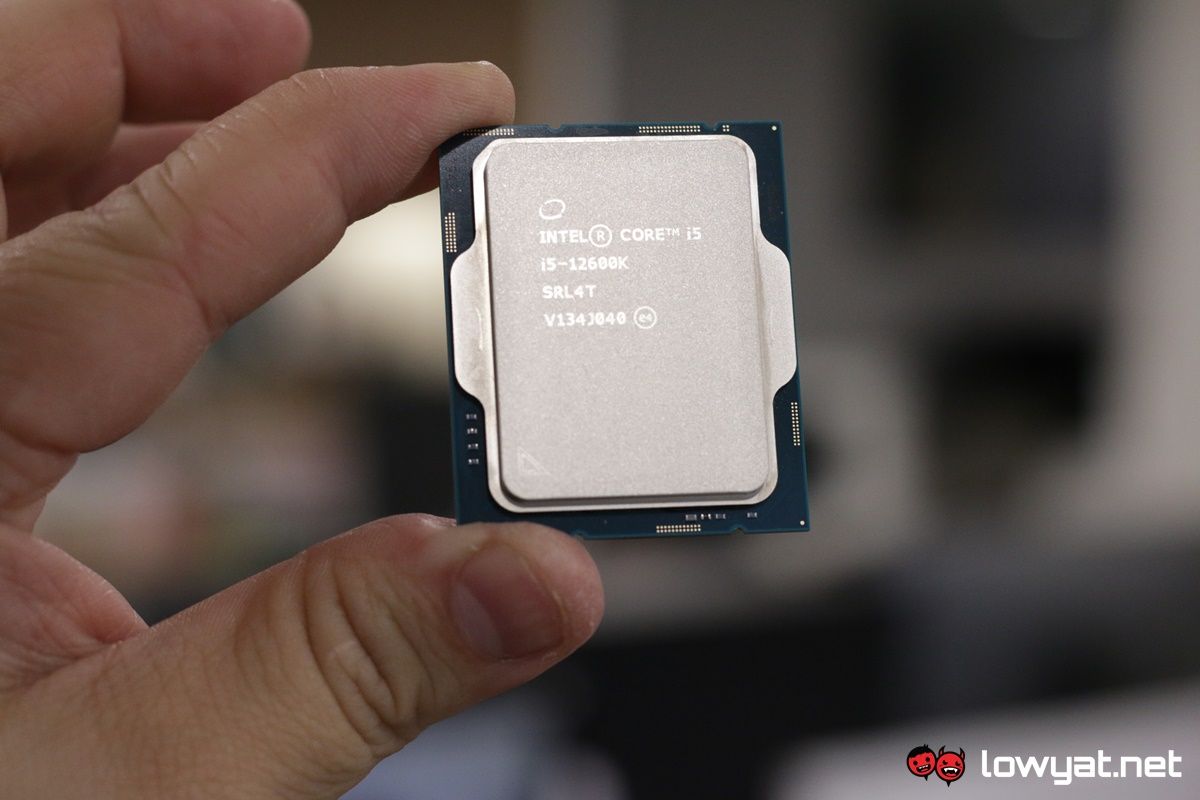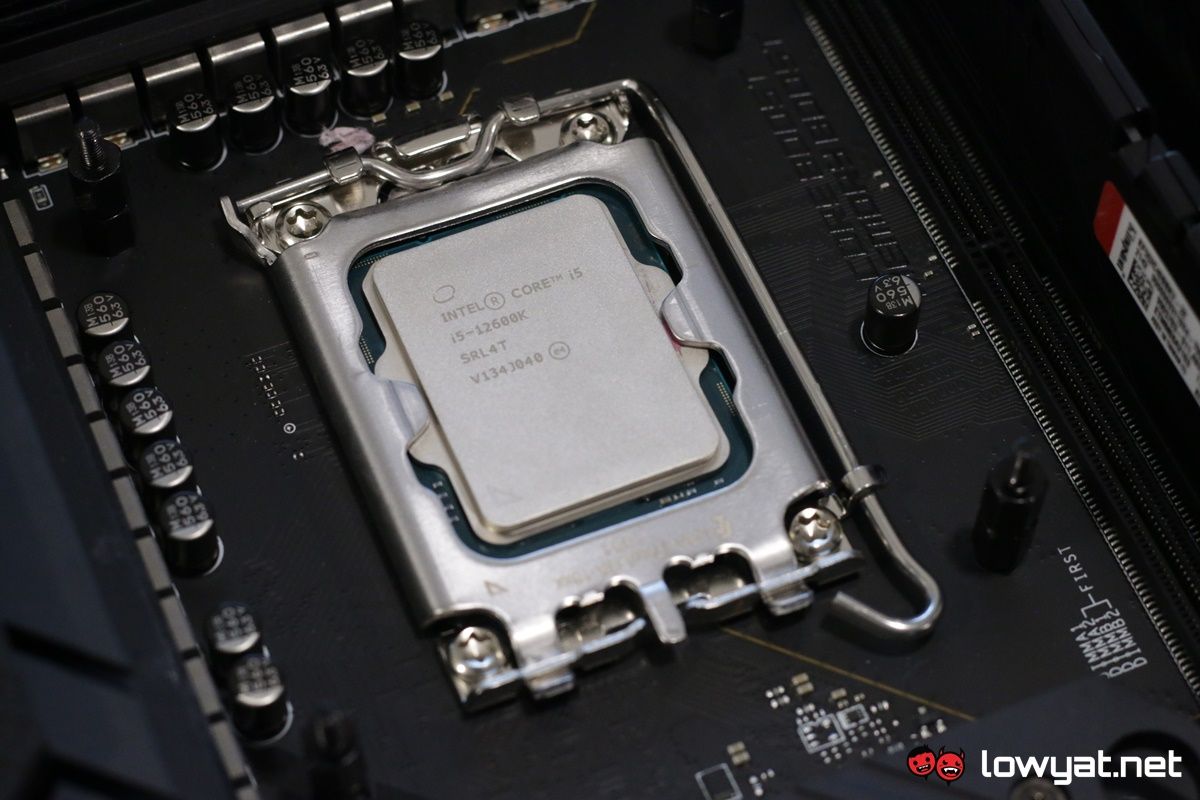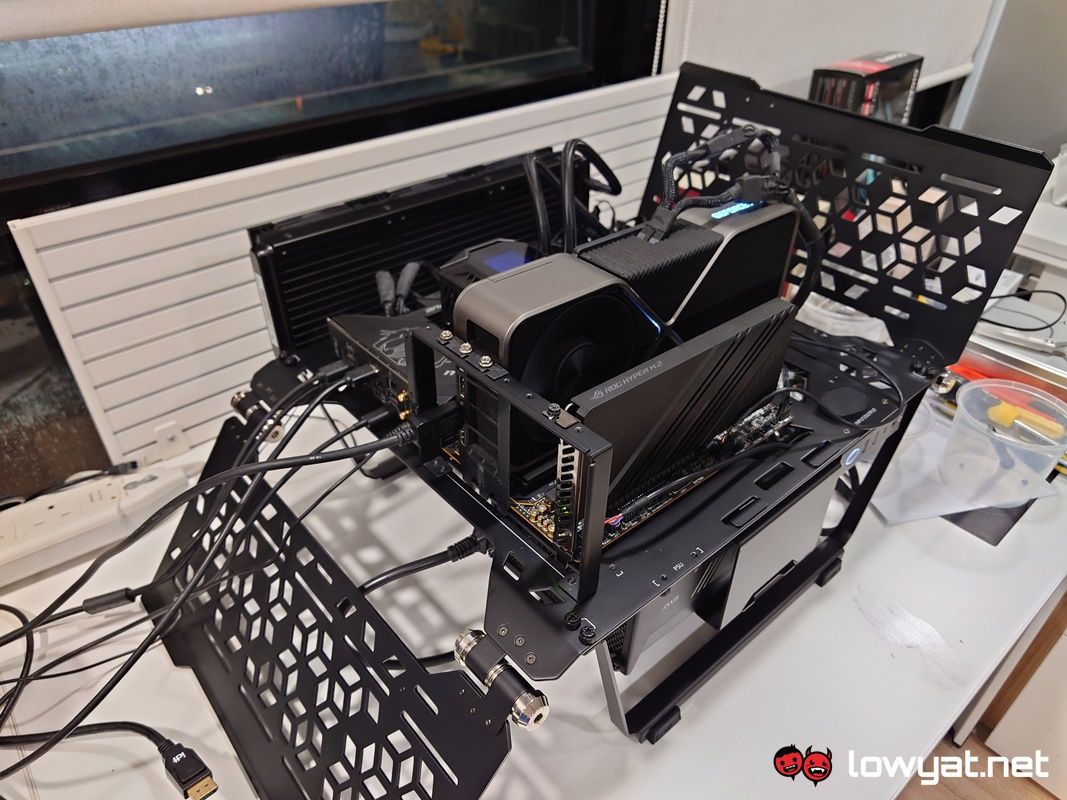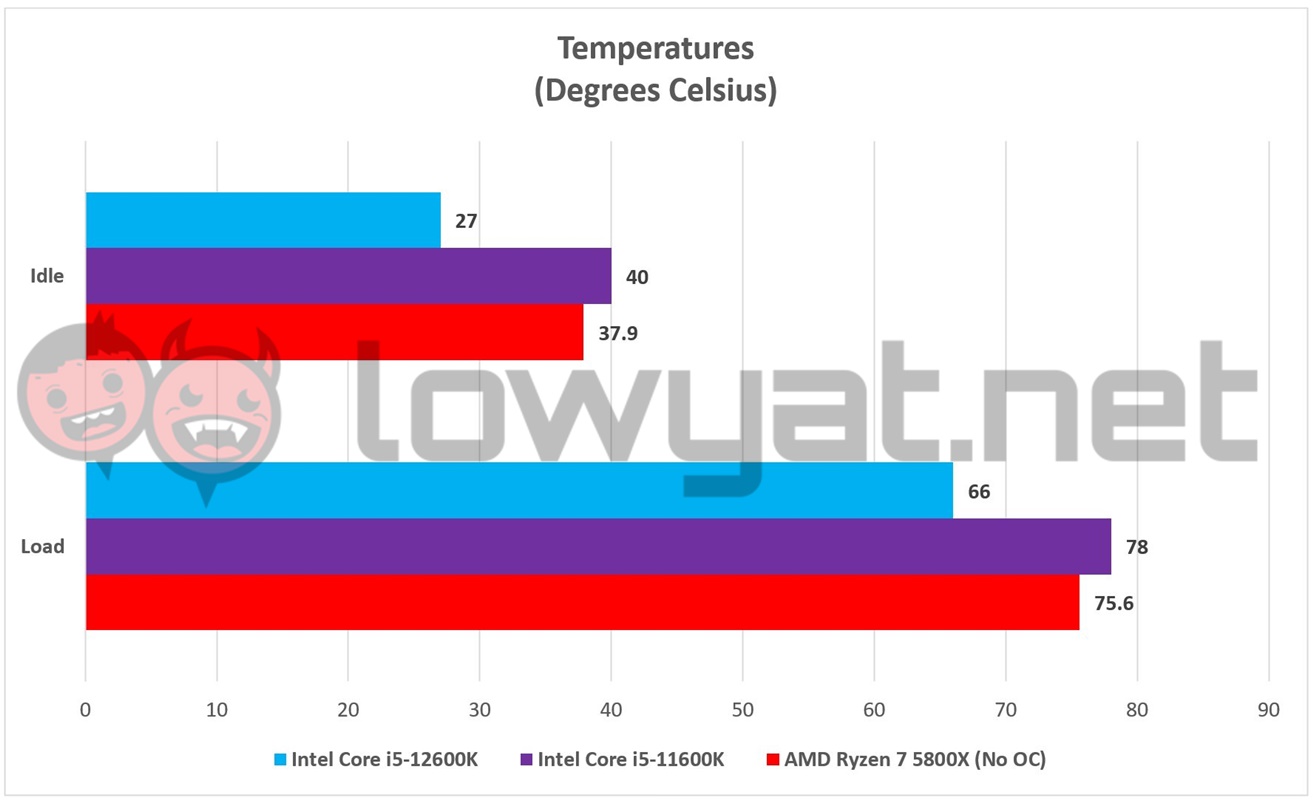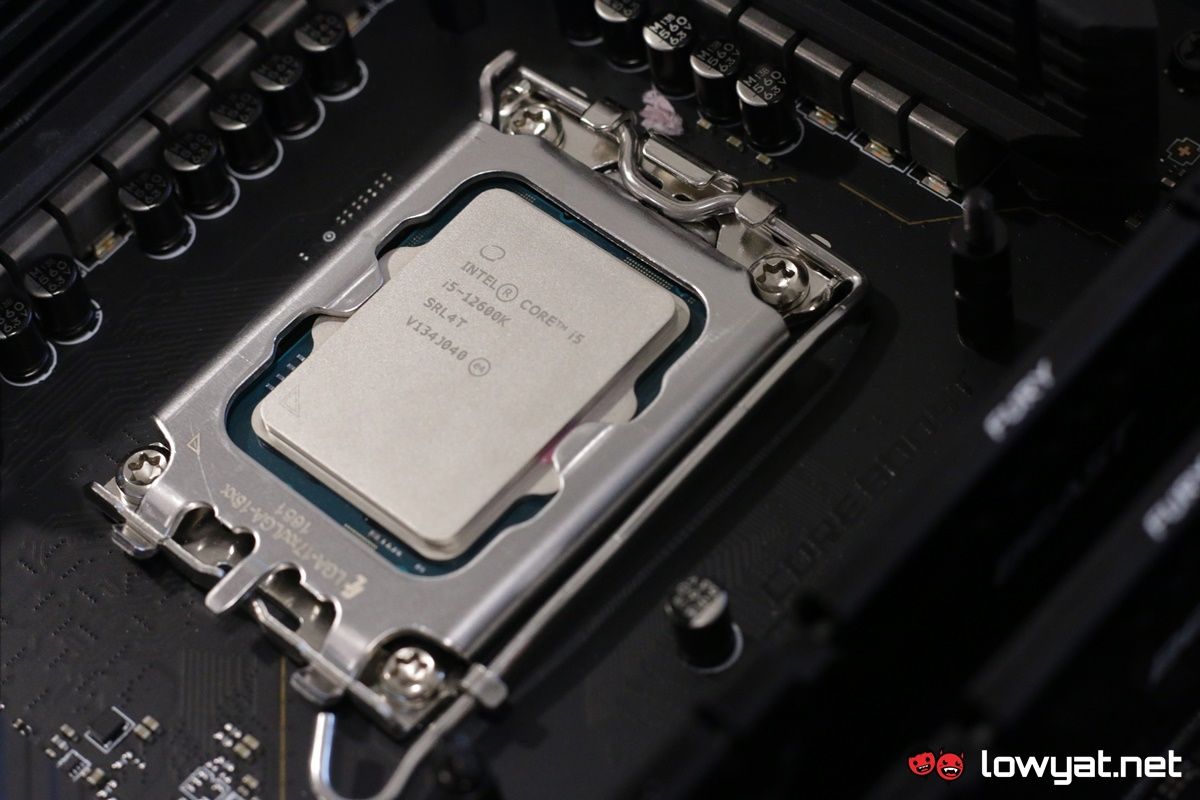While Intel’s non-K Alder Lake CPUs are now official, an argument can still be made over the benefits of procuring an overclockable, mid-range, 12th generation CPU, such as the Core i5-12600K. I won’t beat around the bush here: as a direct successor to last generation’s Core i5-11600K – it’s hard to believe it’s barely been a year since I last reviewed it – there is both a vast difference and improvement with Intel’s latest mid-ranger, and it shows.
So, let’s jump right into it.
Specifications
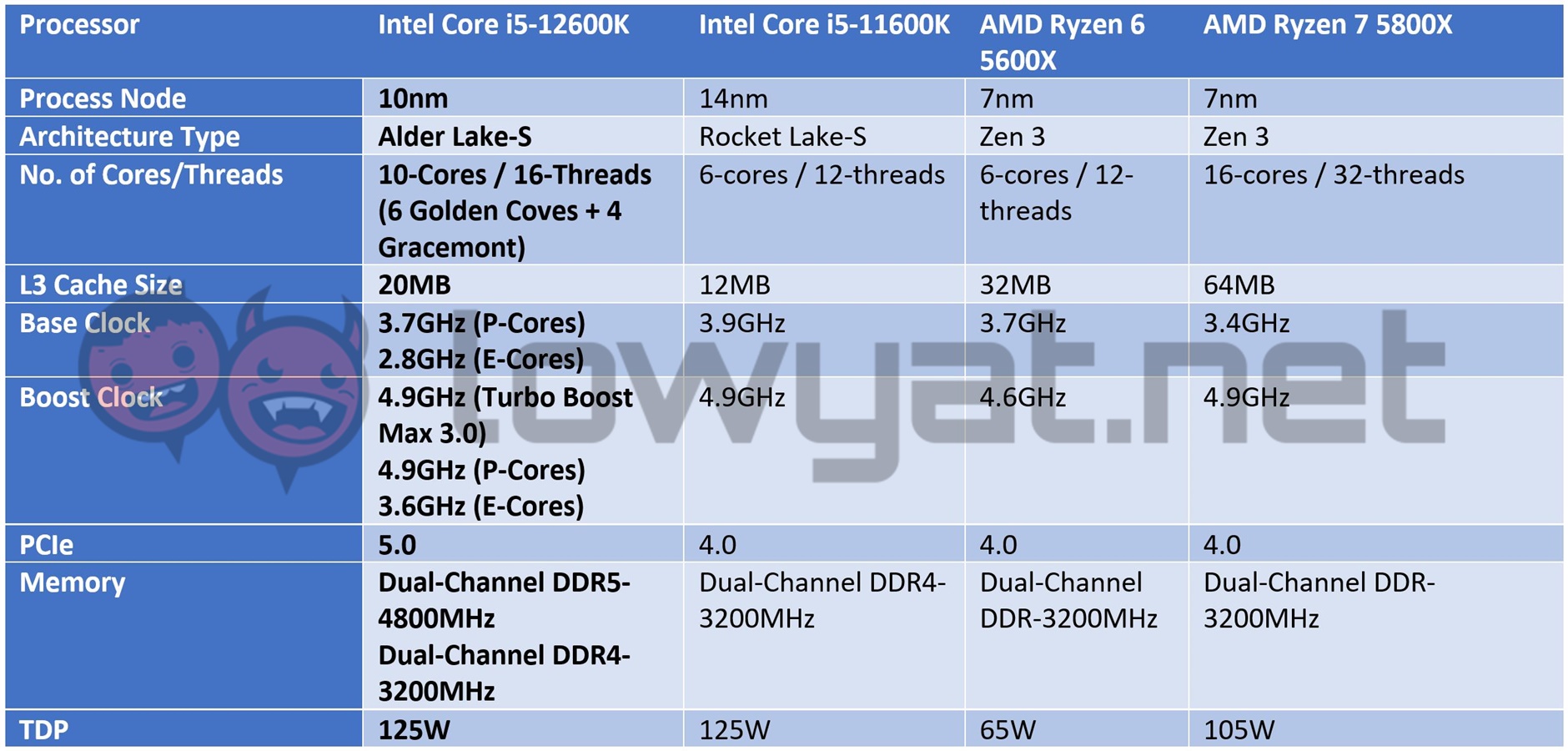 Like the Core i9-12900K, the 12600K is based on the same Intel 7 process, which is basically a fancier name of the chipmaker’s long-awaited 10nm Enhanced SuperFIN die lithography. Naturally, as a 12th generation CPU, the processor is built around Intel’s new hybrid architecture of Golden Cove (P-Cores) and Gracemont cores (E-Cores). In the case of the 12600K, we’re looking at a 10-cores, 16-threads layout, comprising six P-Cores and 4 E-Cores with a boost clock of 4.9GHz and 3.6GHz, respectively.
Like the Core i9-12900K, the 12600K is based on the same Intel 7 process, which is basically a fancier name of the chipmaker’s long-awaited 10nm Enhanced SuperFIN die lithography. Naturally, as a 12th generation CPU, the processor is built around Intel’s new hybrid architecture of Golden Cove (P-Cores) and Gracemont cores (E-Cores). In the case of the 12600K, we’re looking at a 10-cores, 16-threads layout, comprising six P-Cores and 4 E-Cores with a boost clock of 4.9GHz and 3.6GHz, respectively.
More importantly and because the 12600K is 12th generation, that also means access to the latest DDR5 memory standard.
Design
Again, I’m not going to be spending much time in this, section, primarily because I have already covered the essentials of Intel’s Alder Lake architecture and what it brings to the table with its 12th generation CPU. Like its top-end counterpart, the 12900K, the 12600K possesses the cuboid design, made in part to accommodate the new LGA1700 socket that is also part and parcel with all Intel 600 series motherboards.
Beneath the cover, we’re looking at, once again, a 10-cores, 16-threads CPU with a 20MB Intel Smart Cache. Obviously, both the P-Cores and E-Cores of the 12600K are overclockable but in this review, we’ll simply be testing the CPU as is, right out of the box.
Testbed
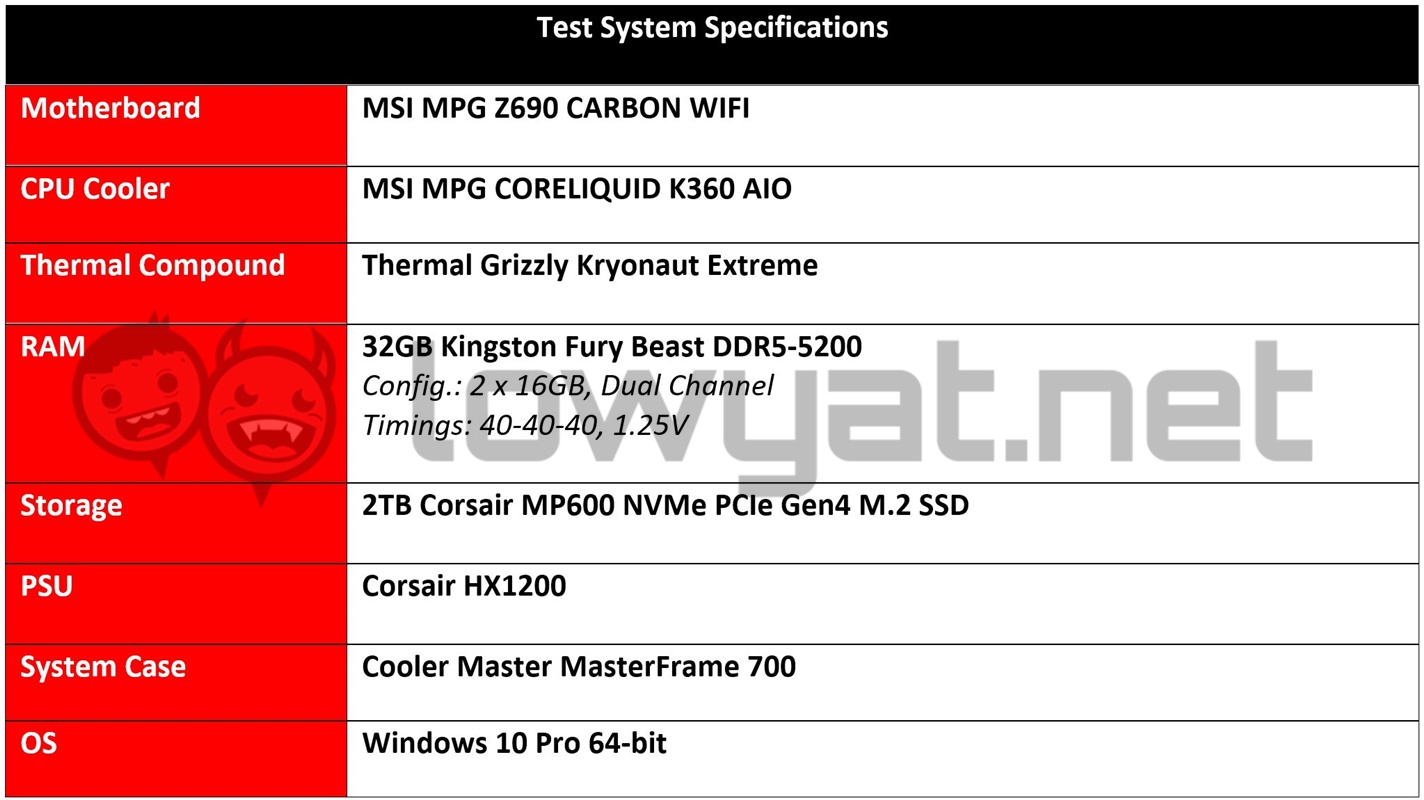 In this review, there’s going to be a slight deviation from my usual hardware. As you can see in the list, both the motherboard and cooler that are being used in this review are provided by MSI, which are part of the brand’s MPG series. In addition, I have swapped out for the previous testbench for Cooler Master’s more up-to-date MasterFrame 700 open-air casing cum testbench, although this is more for an ease-of-assembly and aesthetic standpoint, and less of a cooling efficiency issue.
In this review, there’s going to be a slight deviation from my usual hardware. As you can see in the list, both the motherboard and cooler that are being used in this review are provided by MSI, which are part of the brand’s MPG series. In addition, I have swapped out for the previous testbench for Cooler Master’s more up-to-date MasterFrame 700 open-air casing cum testbench, although this is more for an ease-of-assembly and aesthetic standpoint, and less of a cooling efficiency issue.
Aside from that, I’m maintaining the status quo with all the other components, as I did when I tested the 12900K. To that end, that includes testing the 12600K on Windows 10 and not Windows 11. I’ll get to testing both the 12600K and 12900K on Windows 11 in the near future, primarily because I want to see how much of an improvement Intel Thread Director actually offers.
Benchmarks
Right off the bat, there is a marked difference between the performance of the 12600K and its predecessor. In the synthetic benchmarks of 3DMark, the 12600K’s CPU and physics test can be overtaking the 11600K by almost 35%, across the board. However, in PCMark 10, those gains are less dramatic, with the AMD Ryzen 7 5800X actually matching it core to core, despite being two cores short from its rival.
Likewise, the story’s the same in the Blender and Cinebench R20 benchmarks, with the 12600K managing to complete the former benchmark’s tests quicker than its predecessor, as well as outperforming it in the multi-core test of Cinebench R20.
With the synthetic benchmark portion of the test already proving its prowess, gaming is a practically effortless exercise. At 1440p and Full HD resolutions, the 12600K tears through all our titles, coming well and truly ahead of both the 11600K and Ryzen 7 5800X. The only title where I am unable to obtain performance data from is Watch Dogs Legion, and that is only due to the fact that the game failing to even boot up and run.
Temperature and Power Consumption
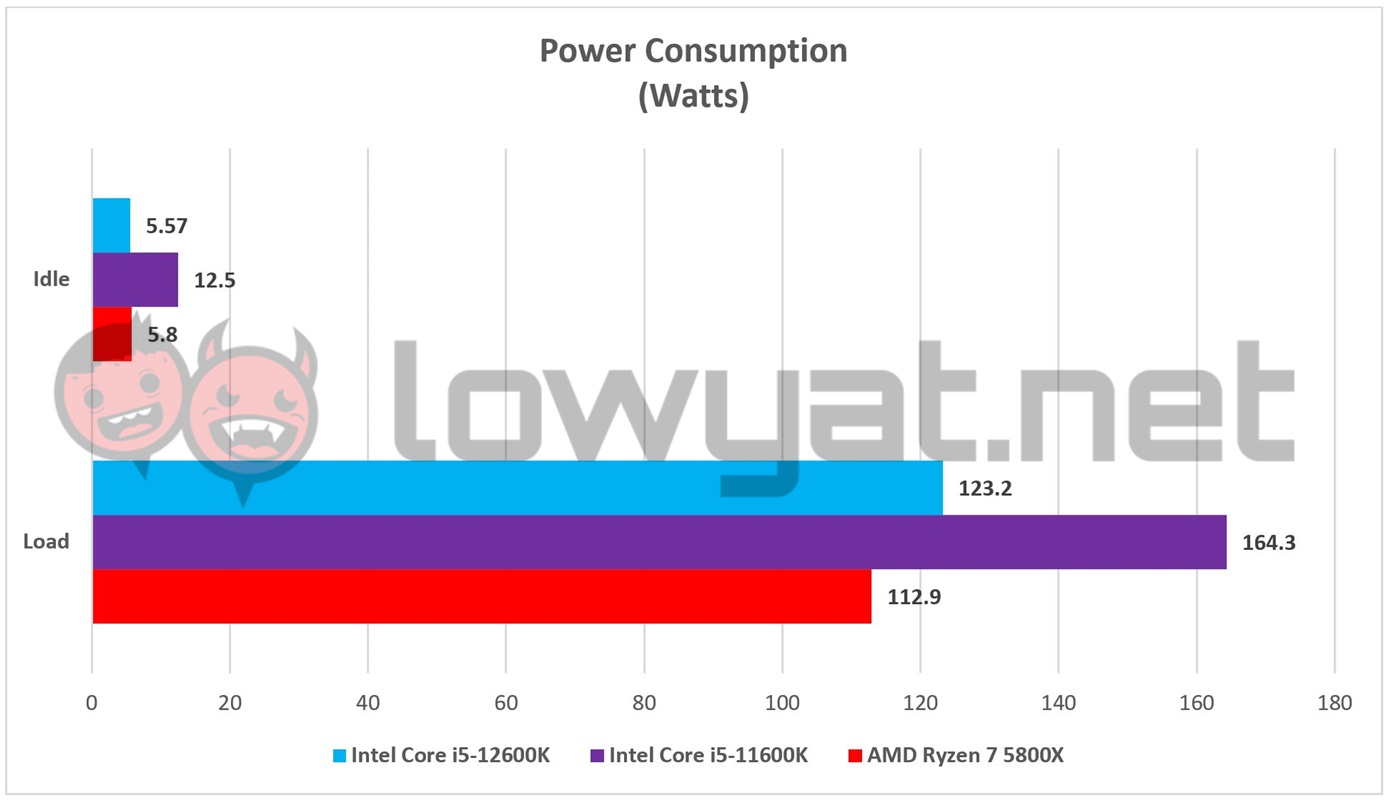 As for power consumption and overall die temperature, the 12600K operated well within its out-of-the-box TDP of 125W and while idle, never consumed more than six to seven watts of power. Beyond that, I have nothing else to report.
As for power consumption and overall die temperature, the 12600K operated well within its out-of-the-box TDP of 125W and while idle, never consumed more than six to seven watts of power. Beyond that, I have nothing else to report.
Regarding its operating temperature, I am pleasantly surprised that, even under heavy stress and multiple CPU-intensive workloads, the maximum temperature reached by the 12600K never seemed to be higher than 67°C. It’s an impressive feat, considering once again that, less than a year ago, the Rocket Lake-based 11600K would peak closer to 80°C, and this was on an open testbench.
Conclusion
At RM1299, the Intel Core i5-12600K is a lot of CPU, especially when you consider that this is a mid-range SKU, designed and made for the enthusiast PC builder that isn’t prepared to splurge for a Core i7-12700K or all-out for a Core i9-12900K.
Having said that and despite the arrival of the new mid-range 600 series motherboards, I would still recommend that you pair the 12600K with a Z690 motherboard, if only to ensure that your overclocking endeavours remain unhindered by any limitations that are accompanied by the H670 or B660 series motherboards.
As I had mentioned when I reviewed the 12900K, if you’re planning to jump back on to the Intel bandwagon, now is a good a time as any. Assuming, of course, you are actually able to procure a unit and the retail store actually has stock of it.
Photography by John Law.
Follow us on Instagram, Facebook, Twitter or Telegram for more updates and breaking news.


